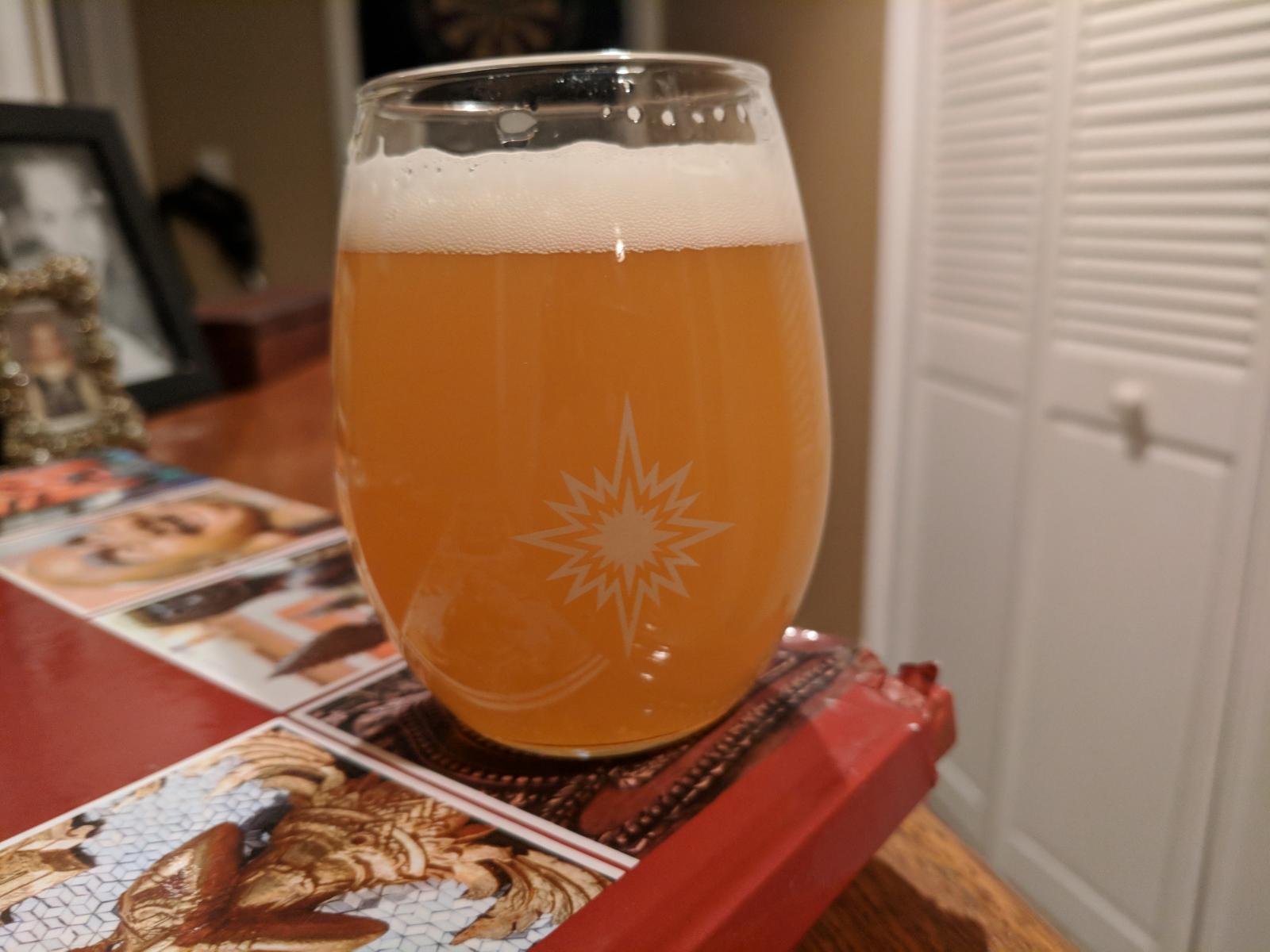pearljam1984
Well-Known Member
- Joined
- Oct 29, 2017
- Messages
- 73
- Reaction score
- 46
Long time viewing of this thread, but wanted to add my experience in hopes to help others trying to achieve the style.
I have used 1318, OMEGA DIPA and S04 with this style. I prefer to use S04. I get a cleaner hop profile and dont feel hops are being taken by yeast or grain.
Most recently I tried a NE Blonde(take on Eureka!)
Grains-
10lbs. - 2-Row
1lb. Carapils
Hops-
30min- Columbus - .25oz
10min- Columbus - .25oz
Whirlpool- Columbus .50oz
Whirlpool- Topaz 1.0oz
Dry Hop- Citra 1.0oz (6 days)
Dry Hop- Mosaic 1.0oz (6 days)
Keg Hop- Columbus- .25oz
Keg Hop- Citra- 1.0oz
Keg Hop- Mosaic- 1.0oz
Yeast S04
Mashed at 152 degrees.
Added Dry hops around 36 hours into fermentation at high Krausen. S04 finished for me in about 54-60 Hours.
My experience is you dont absolutely have to use Oats or Wheat in your grain bill. Also, using 16oz of hops will definitely give you a hopped up beer, however I find it not necessary. I have rarely gone above 10oz.
I ferment for 7 days and then move to keg and carb around 8psi for 3-4 weeks. 4-5 weeks is ideal to start drinking. Here is a shot of the beer from above at day 14, one week into keg. Murky even after letting the keg pour to waste for a few seconds. I expect it to clear a bit, but keep its haze.

I have used 1318, OMEGA DIPA and S04 with this style. I prefer to use S04. I get a cleaner hop profile and dont feel hops are being taken by yeast or grain.
Most recently I tried a NE Blonde(take on Eureka!)
Grains-
10lbs. - 2-Row
1lb. Carapils
Hops-
30min- Columbus - .25oz
10min- Columbus - .25oz
Whirlpool- Columbus .50oz
Whirlpool- Topaz 1.0oz
Dry Hop- Citra 1.0oz (6 days)
Dry Hop- Mosaic 1.0oz (6 days)
Keg Hop- Columbus- .25oz
Keg Hop- Citra- 1.0oz
Keg Hop- Mosaic- 1.0oz
Yeast S04
Mashed at 152 degrees.
Added Dry hops around 36 hours into fermentation at high Krausen. S04 finished for me in about 54-60 Hours.
My experience is you dont absolutely have to use Oats or Wheat in your grain bill. Also, using 16oz of hops will definitely give you a hopped up beer, however I find it not necessary. I have rarely gone above 10oz.
I ferment for 7 days and then move to keg and carb around 8psi for 3-4 weeks. 4-5 weeks is ideal to start drinking. Here is a shot of the beer from above at day 14, one week into keg. Murky even after letting the keg pour to waste for a few seconds. I expect it to clear a bit, but keep its haze.








































![Craft A Brew - Safale S-04 Dry Yeast - Fermentis - English Ale Dry Yeast - For English and American Ales and Hard Apple Ciders - Ingredients for Home Brewing - Beer Making Supplies - [1 Pack]](https://m.media-amazon.com/images/I/41fVGNh6JfL._SL500_.jpg)

















